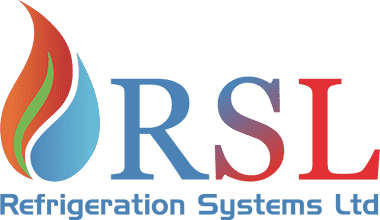Everyone’s always looking to save money on their utility bills, but you should know there’s a way to keep costs down, even when you’re out of the house.
The key is your thermostat. By using automatic schedules, you can help the thermostat plan for your preferred temperatures. That means you can have different temperature settings for when you’re home, away or even when you’re asleep.
With a few simple adjustments, you can enjoy comfy temperatures while cutting down your energy bills. Here are some ways your thermostat can save you money in the summer:
While at Home
Pretty much whenever you’re home, you want to enjoy a comfortable temperature. For the most part, you probably have your thermostat lower in the summer while inside to appreciate the cool air.
But the ideal temperature for the summer is usually between 78 and 80 degrees Fahrenheit. With this adjustment, you’ll keep cool while still lowering your monthly energy bill.
While Away
When setting the temperature for a vacation or other trip away from the house, it’s advantageous to set the thermostat higher for while they’re gone.
Depending on the local climate or your home’s location, you can set the thermostat to higher temperatures like 88 degrees while no one is home before lowering it back to the sweet spot of 78-80 degrees after you return. This way, your air conditioning unit won’t be working overtime to provide cooling for a bunch of empty rooms.
While Asleep
To enjoy a good night’s sleep during the summer, you want a nice cool temperature. A great place to start is between 68-72 degrees Fahrenheit. You won’t have to worry about getting too hot or too cold while you’re trying to sleep.
Other Ways to Use Less Energy:
- Smart thermostat installation: Trying a smart thermostat in the summer helps save money on energy costs by automatically adjusting to your lifestyle and idea of what comfortable is. It’ll take care of making changes while you are home or sleeping, while allowing it to get a little warmer when no one is home. With models like the Lennox iComfort, you can adjust the temperature remotely through your smartphone, tablet or laptop. Planning smart thermostat installation in your Richmond home can be the simplest strategy for maintaining comfortable, yet energy-efficient temperatures whether you’re at home or across the country.
- Replace current equipment with a newer HVAC system: A high-efficiency HVAC system is another great option for long-term energy savings. With greater energy efficiency, your utility bills will be lower because it requires less energy to heat and cool your home. Air conditioning installation in Richmond is only a phone call away, so don’t hesitate to reach out to local pros like Refrigeration Systems Ltd. who can set you up for success.
- Keep up with AC maintenance: Hiring a skilled professional to perform regular air conditioning maintenance in Richmond can have a significant impact on your utility bills. By regularly cleaning the coils, checking for damage and keeping vents clear of dust and debris, you may notice your HVAC system perform better during day-to-day use.. Increasing efficiency also limits strain on important or delicate components and lowers operational costs, leading to lower energy usage, which translates into lower energy bills.
- Replace your air filter regularly: Cleaning or replacing the air filter regularly saves money by keeping airflow as smooth and consistent as possible. When filters are clogged with dirt and debris, an AC unit has to work harder, and the added strain may impact the system’s life span and result in breakdowns.
- Confirm your attic is sufficiently insulated: Insulation is a crucial component for any energy-efficient home, securing the hot air outside and the cool air inside during the summer. The North American Insulation Manufacturers Association (NAIMA) offers an official recommendation stating homeowners in souther states should possess at least 13-14 inches of insulation, while colder climates do better with 16-18 inches.
- Review your air ducts: Damage to the ventilation is capable of increasing your energy bills much more than 20 percent, plus it can also lead to problems with your water heater, clothes dryer and other appliances to get into the atmosphere of your home. Checking your ductwork for leaks and sealing them can fix both of those problems.
- Seal all other leaky spots in your home: Sealing leaky spots in your home with caulk, foam sealant or weather-stripping can help keep it cooler on hot summer days. Don’t forget to check for any gaps around windows, doors and even outdoor fixtures. Making time to seal leaks now can help you save a lot in the long run.
